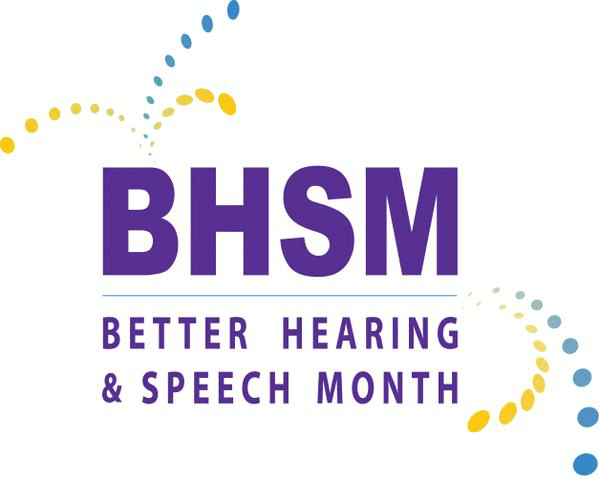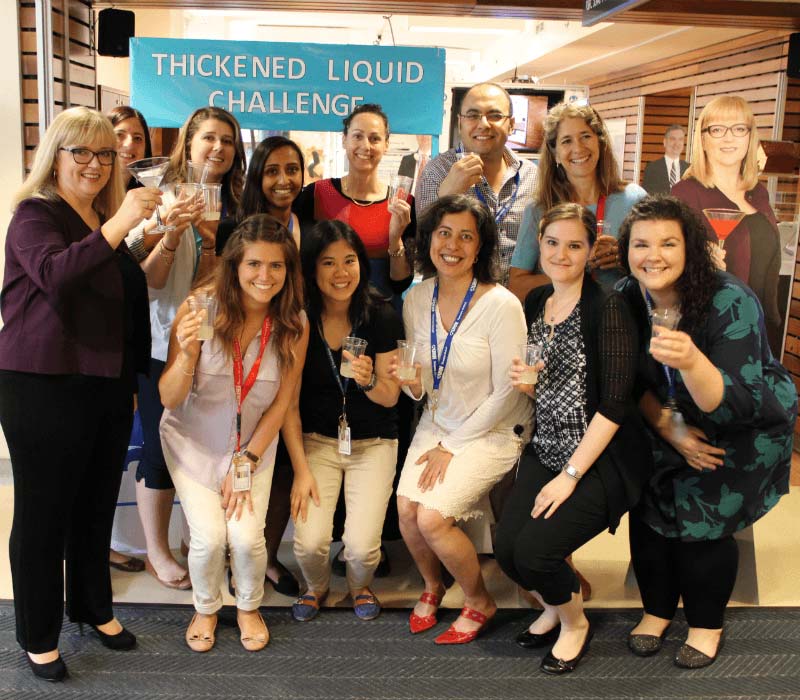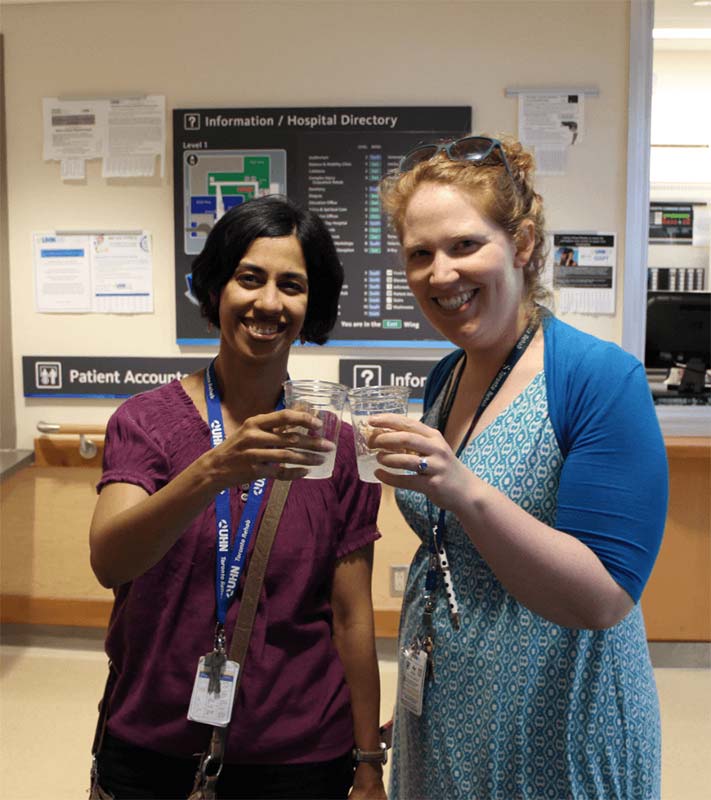Why do we Need a Dysphagia Awareness Month?
by Karen Sheffler, MS, CCC-SLP, BCS-S of SwallowStudy.com (June 2015)
May is Better Hearing & Speech Month (BHSM)
May was the American Speech and Hearing Association’s Better Hearing and Speech Month (#BHSM, @AHSAweb on Twitter and ASHA on Facebook). See my Better Hearing and Speech Month blog from 2014.
In May 2015 there were 1,076 tweets under the hashtag #BHSM! Yes, I counted them. All great resources. Way to go Audiologists and Speech-Language Pathologists (SLP)! We rock!

Of course, given that May is clearly named “hearing & speech month,” none of these tweets mentioned an SLP’s impact with people who have difficulty swallowing (dysphagia). As noted by Dr Ianessa Humbert in her blog on DysphagiaCafe.com (and per ASHA’s 2007 & 2011 SLP Health Care Surveys), SLPs working in healthcare “spend the majority of their time addressing swallowing disorders.”
Swallowing & Swallowing Disorders are Missing from BHSM
The broad SLP fields of swallowing & swallowing disorders and feeding & feeding disorders get forgotten in these May promotions.
Fortunately, a swallowing lab in Canada did not forget…
Dr Catriona Steele’s Swallowing Rehabilitation Research Lab in Toronto promoted swallowing awareness during May’s Better Hearing & Speech Month!

Dr Catriona Steele, PhD, SLP (C), CCC-SLP, BCS-S, CASLPO, ASHA Fellow CHEERS!
On May 27, 2015, they set up a lemonade stand, and you guessed it — the lemonade was thickened! The stand could not be missed by staff, patients and the public. It was set up in the Innovations Gallery on the ground floor of the UHN Toronto Rehabilitation Institute.

Steele’s Swallowing Rehabilitation Research Laboratory & Toronto Rehabilitation Institute, University Health Network
Dr. Catriona Steele challenged the Institute’s executives (the Director and the Senior Clinical Director), as well as other staff, patients and the public to do a #thickenedliquidchallenge. Many of you in the past followed #thickenedliquidchallenge on social media platforms. But this was more than just a #thickenedliquidchallenge; it was a swallowing and dysphagia awareness challenge. They raised awareness of swallowing disorders and shared the lab’s prolific research.
Steele’s swallowing lab shared the following statistics:
- 1 in 2 adults will encounter swallowing challenges in themselves or a loved one.
- Swallowing disorders (dysphagia) are 10 times more common than epilepsy.
-
Swallowing disorders are more common than diabetes.

SLPs from Toronto Rehab Institute
~~~
June is National Dysphagia Awareness Month
Well, now we have work to do in June as well, as that is the official Dysphagia Awareness month in the United States.
June was made National Dysphagia Awareness Month on September 27, 2008. Congress actually passed a bipartisan statute agreeing to make June National Dysphagia Awareness month!
To see more information on National Dysphagia Awareness month, go to the NFOSD website. We need to “advance the treatment of swallowing disorders in our lifetime,” as NFOSD’s slogan so perfectly states. Follow @NFOSD on social media platforms.
To advance the science of swallowing, the Dysphagia Research Society (DRS) has long been promoting dysphagia awareness by encouraging interdisciplinary (transdisciplinary) research and sharing knowledge globally. Follow DRS on X/Twitter @Official_DRS and Facebook.com/DysphagiaResearchSociety
DRS Shared Dysphagia Statistics
(from the 23rd Annual Meeting, March 2015, Chicago, IL)
-
600,000 people die each year from complications related to swallowing disorders; more than liver disease, kidney disease and HIV combined. Similar to that of diabetes.
-
Dysphagia is not a disease in and of itself. It is a symptom. Diseases, disorders and problems across many of the body’s systems can cause dysphagia.
-
Dysphagia occurs approximately 90% of the time in patients with Parkinson’s and ALS.
The DRS 2014-2015 President, Kulwinder S. Dua, MD, DMSc, FRCP, FACP, FASGE, encouraged a multidisciplinary approach to address dysphagia. If there is no cross-talk, per Dr Dua, we are working in isolation, and that is a disaster. As a gastroenterologist, Dr Dua pointed out: “What is the point in opening up the esophagus if the pump [the oropharyngeal propulsive phase] is not working?” This is but one example of the need for multiple disciplines to work together to help our patients.
~~~
Summary: Why Raise Dysphagia Awareness?
Early identification of a swallowing disorder is crucial to prevent adverse outcomes, like: pneumonia, dehydration and malnutrition. This is especially true in cases of head and neck cancer. See my previous blog on HPV.
In the adult population alone, Bhattacharyya (2014) estimated 9.44 million adults (plus/minus 0.33 million) have a swallowing disorder. He analyzed the 2012 National Health Interview Survey and concluded that “swallowing problems affect 1 in 25 adults, annually.” These numbers are based on a survey, so the actual prevalence may be much higher.
Read more (consumer handout): How do I know I need a swallow study?
Bhattacharyya discovered that only 23% of these adults pursued professional help for their swallowing problem, even though 24.8% reported it to be a moderate problem and 31.7% described it as a big problem and many had days off of work due to the swallowing problem. What about the changes in quality of life?
Read more (consumer handout): How is my swallowing evaluated?
So May reminds us to gear up for #DysphagiaAwareness in JUNE!
Cheers to that!
Thank you for reading and sharing!
Please see the SwallowStudy.com menu above to find other helpful clinician resources, links and product reviews. Under “clinician links,” you can connect directly with the top dysphagia websites. For example, ASHA’s SIG 13 (Special Interest Group for Swallowing and Swallowing Disorders) and American Board of Swallowing and Swallowing Disorders (AB-SSD, who have the credentialing program to become a Board Certified Specialist in Swallowing and Swallowing Disorders – BCS-S, as well as excellent advanced continuing education courses).
Reference:
Bhattacharyya, N. (2014). The prevalence of dysphagia among adults in the United States. Otolaryngology – Head and Neck Surgery, 151 (5), 765-769. https://oto.sagepub.com/content/151/5/765.abstract


